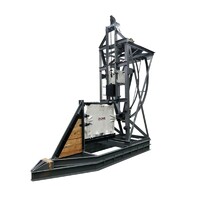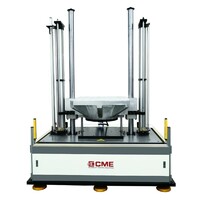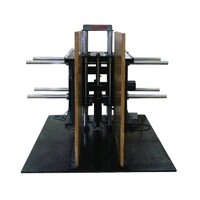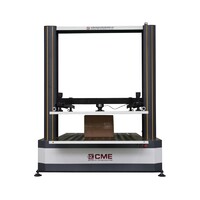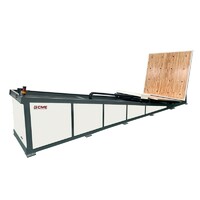KRD16 High Impact Shock Test System
Product Quick Detail
- FOB Price
- USD $10,000.00 / Piece
- Minimum Order
- 1
- Place Of Origin
- china
- Packaging
- N/A
- Delivery
- 15 Days
Specifications
KRD16 series shock test system is a standard testing equipment stipulated by the high impact shock test method and meets MIL-S-901D standard which covers shock testing requirements for shipboard systems, equipment, machinery, and structures. The high-impact shock resistance test system is designed to verify the ability of shipboard installations to withstand shock loadings which may be incurred during wartime service due to the effects of underwater explosions, bump impacts, close range shots, air explosions, train coupling loads, etc. It can not only perform shock assessment tests on ship equipment in accordance with military standard requirements but also can be used to test and study the shock performance of various shock absorbers and structures. It played an important role in improving the shock resistance of ship equipment.
FEATURES OF KRD16 HIGH ENERGY SHOCK TEST SYSTEM
CME provides lightweight & medium weight high impact testing equipment in accordance with one of the following test categories, as specified.
Lightweight.The lightweight test is a test performed on the lightweight shock machine. The weight of the specimen including the fixture to attach it to the test machine shall be less than 250kg (550 pounds).
Medium weight.The medium-weight test is a test performed on the medium-weight shock machine. The weight of the test item including the fixture to attach it to the test machine shall be less than 3357kg (7,400 pounds).
TABLE OF KRD16 HIGH IMPACT SHOCK TEST SYSTEM
The lifting mechanism is used to raise a heavy hammer to a predetermined height and then make it fall freely, and hit the cutting board on which the specimen is installed, so that the specimen bears a complex shock load, thereby determining the specimen\'s ability to withstand shock.
The lifting system is composed of an electric-reduction unit, high-strength chain, hook, rotating arm, vertical guide track, vertical limit lever, swing hammer angle indicator plate, etc.
Two shock hammers (horizontal hammer and vertical hammer) that can move in different directions enable the equipment to easily realize three-directional shock motion.
- Country: China (Mainland)
- Founded Year: 2006
- Address: No.3 Upgrade Demonstration Base, West of Yongchang Rd., High-tech Zone, Xianyang City, Shaanxi Province, 712023 China
- Contact: Echo Yang

